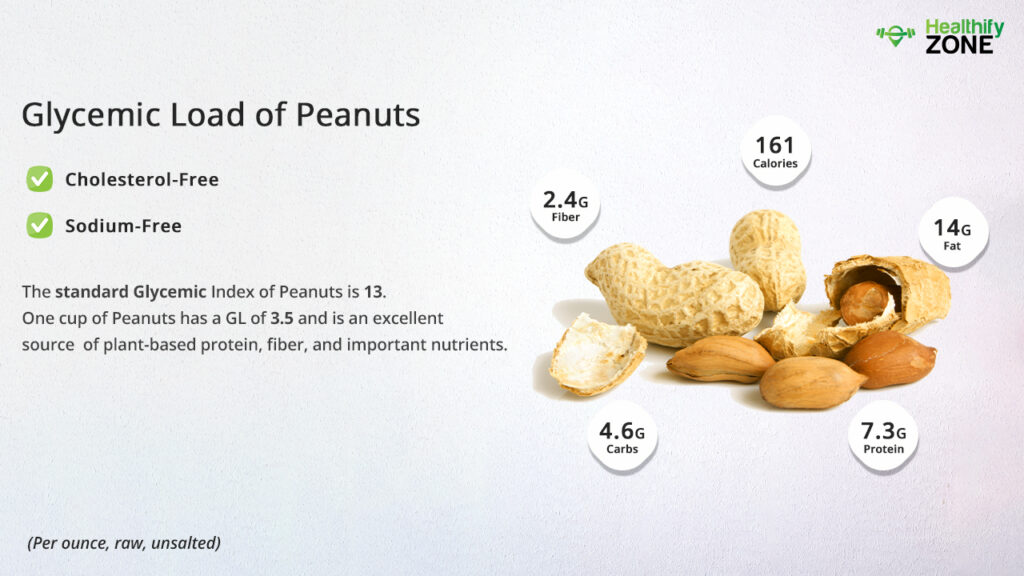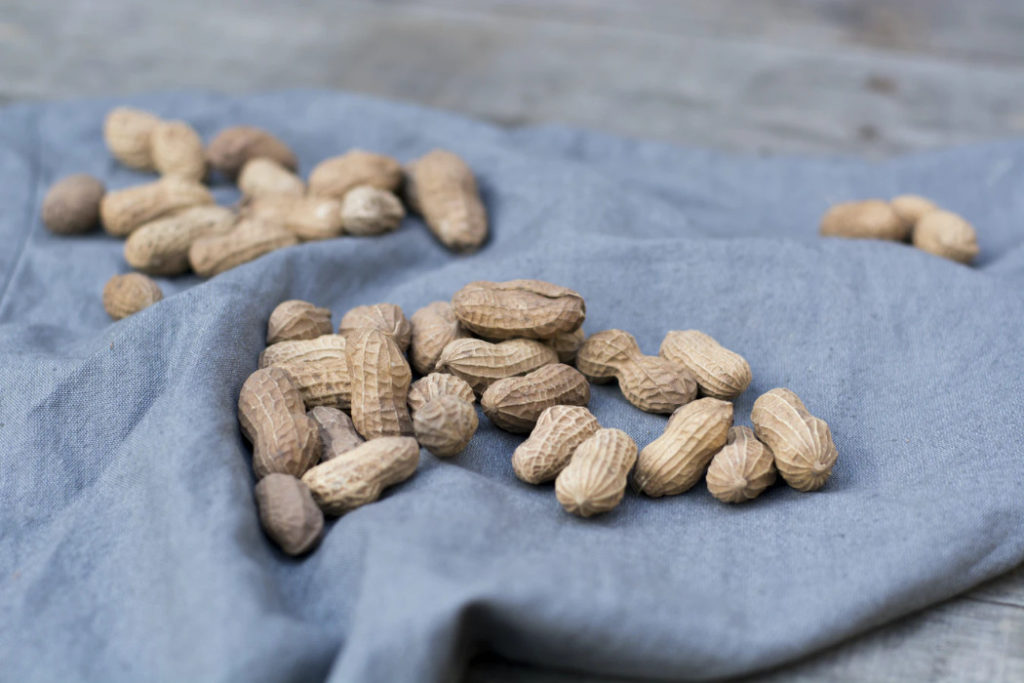The measurement of the carbohydrate content of food with the pace at which it increases the blood sugar levels is called the Glycemic Load. A simple way of making healthier diet choices is following the Glycemic Index, which compares and shows alternative sources according to your blood glucose levels. Glucose shows a relatively higher blood glucose response in comparison to fructose.
Peanuts are known for having a firm nutritional profile, for being an excellent source of plant-based protein, fiber, and several other key vitamins and minerals. They come in various forms, which include salted, chocolate-coated, roasted, and peanut butter. This is also very high in calories, so they must be consumed in moderation. The International GI Tables have shown that peanuts have a GI of 13.
Peanuts are known to be most healthful when eaten in raw form, and it comprises healthy nutrients like
- Fiber
- Potassium
- Phosphorous
- Magnesium
- Calcium
- Sodium
- Iron
- Zinc
- Vitamin B3
- Vitamin E
- Vitamin B1
- Vitamin B6
- Riboflavin
- Folate
How to Calculate Glycemic Load of Peanuts?
The standard Glycemic index of peanuts is 13. The high glycemic index of the fruit helps in reducing the risks related to cardiovascular diseases. If we want to talk about diet, the key to prevent diabetes or any chronic illness is to distribute the carbohydrate consumption content throughout the day and manage the sugar levels in the body correctly—however, the glycemic load for one cup of chopped watermelon= 5.2 approximately which makes it an extremely favorable food.

The Formula/Procedure For Calculation of Glycemic Index of the Watermelon :
GL = GI * carbs / 100
where
- GL – glycemic load;
- GI – glycemic index;
- and carbs – the amount of carbohydrates in the portion.
| SL.NO | PEANUTS BY WEIGHT IN (g) | GLYCEMIC LOAD |
| 1. | 100 g of Peanuts | 2.1 (low) |
| 2. | 250 g of Peanuts | 5.25 (low) |
| 3. | 500 g of Peanuts | 10.5 (medium) |
| 4. | 1 Kg of Peanuts | 21 (high) |
| 5. | 50 g of Peanuts | 1.05 (low) |
| 6. | 1 Cup of Peanuts (150 g) | 3.1 (low) |
Are Peanuts Safe to Consume If You Have Diabetes?
Peanuts are excellent for your health if you have diabetes. They have a very low GI, which means that it does not cause a spike in your blood sugar levels. Given that peanuts have a GI of 13. They are a good choice if you want to manage your blood sugar levels. They are low in carbohydrates but high in protein, fat, and fiber. Research has shown that having peanuts or peanut butter can help women with obesity and diabetes.
Can I Eat Peanuts During a Fat-Loss Diet?
Most of the fats in peanuts are monounsaturated and polyunsaturated fatty acids, which are healthy fats. These are a healthier alternative to saturated and trans fats and can help improve one’s cholesterol levels.

- A 250g serving of peanuts has a GL of 5.25 which is pretty low and could be consumed.
Can I Eat Peanuts During a Low-Carbohydrate Diet?
You can eat peanuts when you are on a low-carbohydrate diet. However, you must be careful of the portion size that you are consuming. We suggest you not consume more than 100 g of peanut per serving.
Are Peanuts High in Sugar?
100 g of peanuts has 16 g of carbohydrates and 4 g of sugar. They are very low in sugar content, but given that it has only 16 g of carbs, you can easily consume 100 g of peanuts every day. It is a nutrient-rich source of protein, dietary fiber, and healthy fat.
Eating peanuts every day in moderation can support heart health, help maintain a healthy weight, and help manage blood sugar levels.